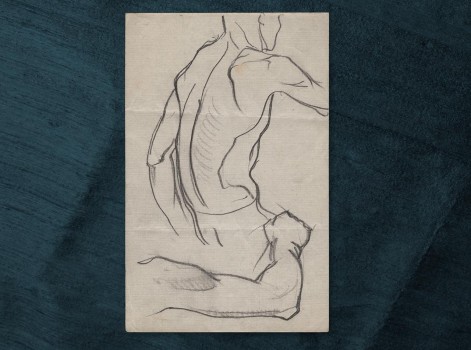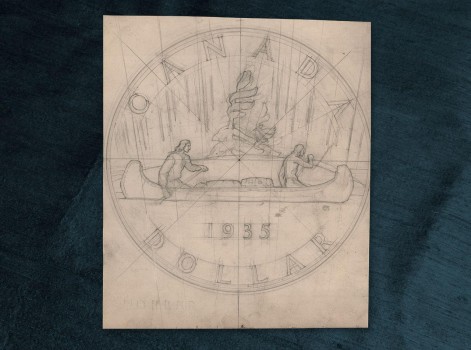Coin designs of Emanuel Hahn
An Emanuel Hahn First World War memorial design in Lindsay, Ontario. (Wikimedia Commons, Richard BH, Hamilton, ON)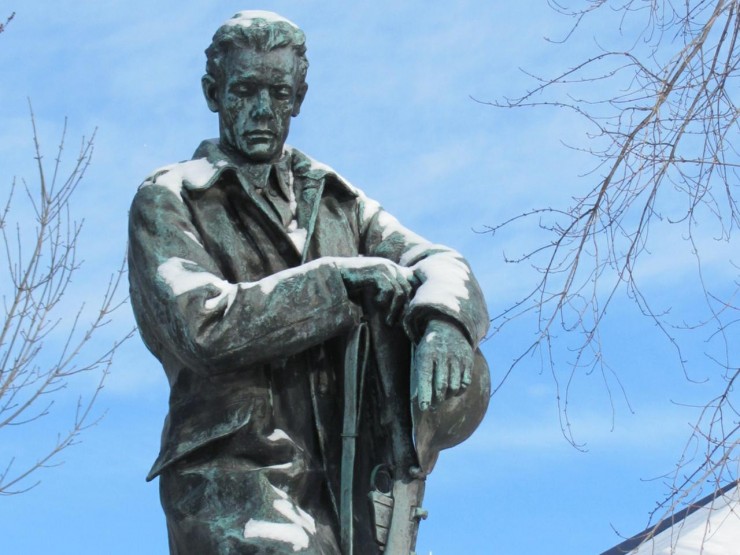
Emanuel Hahn was a celebrated Canadian sculptor whose work can be seen in the monuments of many Canadian cities. Born in Germany in 1881, Hahn immigrated to Canada with his family at the age of 7. Along with medals and a number of significant war memorials, Hahn designed some of Canada’s most distinctive and iconic coins. The voyageur silver dollar, the Bluenose dime, the caribou 25 cent piece and the 1939 silver dollar commemorating the Royal Visit of King George VI and Queen Elizabeth were all Hahn designs.
Pencil drawing by Emanuel Hahn sketching features proposed for the back of the 1935 silver dollar. 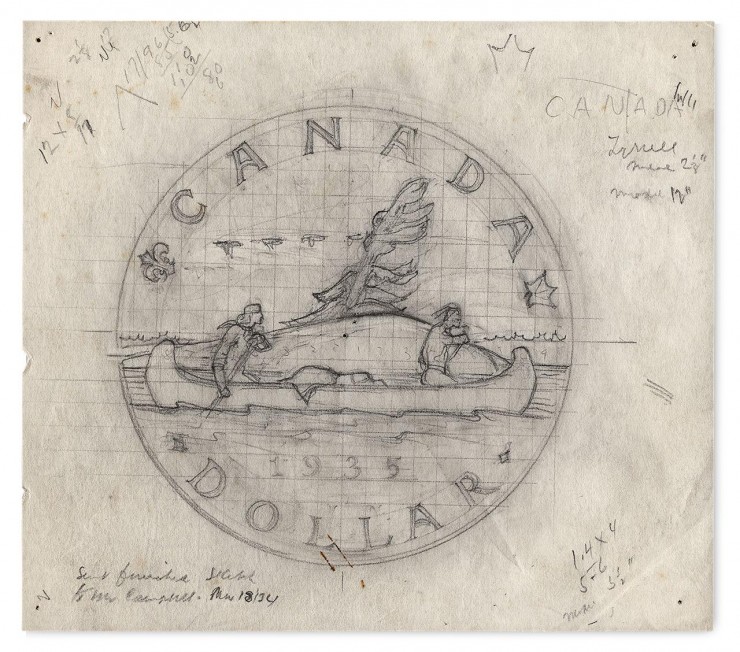
(NCC 1963.059.015.004)
In 1934 the Department of Finance invited Emanuel Hahn to submit a design for a silver dollar commemorating the silver jubilee of the reign of King George V. Hahn corresponded with the Royal Mint in London and the Royal Canadian Mint to gain insight into the process of minting a coin before submitting a drawing depicting a voyageur and a First Nations man paddling a canoe. To ensure accuracy, Hahn studied the designs of traditional canoes and the paintings of Frances Anne Hopkins. Hahn’s design was approved with only a few minor changes and was used as the standard pattern for the Canadian silver dollar until the introduction of the ‘Loonie’ in 1987.
Following the success of the voyageur silver dollar, Hahn was among several artists invited to submit designs for new Canadian coinage to be released in conjunction with the accession of King George VI, in 1937. Hahn produced no less than 16 sketches. His caribou (proposed for both the nickel and the quarter) and his Bluenose were both selected for the new coins. All of the designs put into circulation in 1937 are still to be found on Canada’s circulating coinage today. Hahn left an impressive mark on Canadian currency and all Canadians can be proud to have a ‘Hahn original’ in their pockets.
Reverse of 1935 silver dollar designed by Emanuel Hahn. 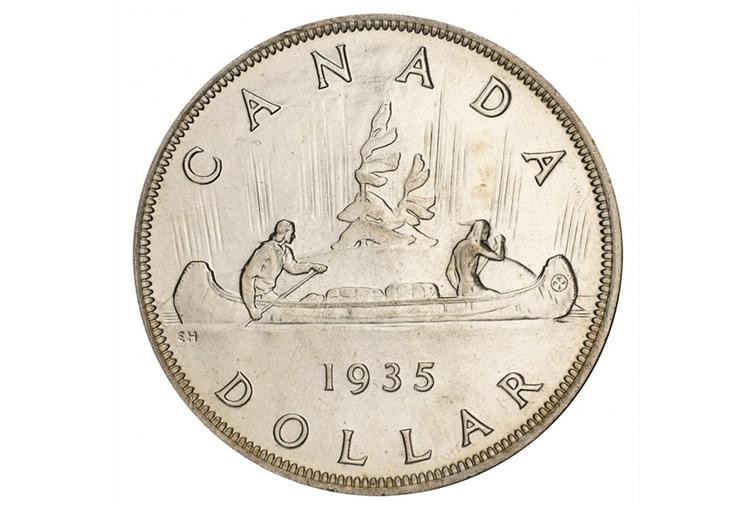
(NCC 1978.058.285b1)
Emanuel Hahn’s legacy of coins, drawings, plaster models and correspondence is preserved in the National Currency Collection of the Bank of Canada.
The Museum Blog
Money of the First World War
By: Paul S. Berry
In Europe, gold and silver coins largely disappeared from circulation as they were hoarded or as governments used the metal for the war effort.
Money’s Magnificent Moustaches
By: Graham Iddon
We would like to present some of history’s great moustaches—as seen on bank notes.
The Devil is in the Hairdo
By: Graham Iddon
Have you ever seen eyes in the bark of trees? Wolves in the clouds? How about spooky things in bank notes?
Canada Financially Comes of Age
By: Paul S. Berry
The First War Loan included bonds in denominations of up to $100,000. They matured in ten years and paid interest at 5 percent.
#AskACurator Day 2018
By: Graham Iddon
What would you ask a curator? Your chance was September 12, when the annual Twitter event #AskACurator Day took place on computers, tablets and mobile phones all around the globe.
Happy Birthday, Dear Bank of Canada Museum!
By: Graham Iddon
A little grade 8 math revealed that, since our last full year of operation, we have increased Museum attendance by 91 per cent (pause while the audience claps).
Unpacking the Collection 8
Dora’s work is as familiar as the change that jingles in your pocket. In all likelihood, you have come in contact with her work while using coinage to pay for your morning cup of coffee.
Operation Fish
By: Robert Low
Operation Fish was the largest movement of physical wealth in history.
New Acquisitions
By: Paul S. Berry
To distinguish the new production from that of 1936, a small impression was added to the reverse dies, creating a raised dot on coins struck from those tools.
The Bank-NOTEable Woman is Here!
By: Graham Iddon
Even if you’re not familiar with Viola Desmond’s story, it will likely become clear that the theme of this note is human rights and social justice.
